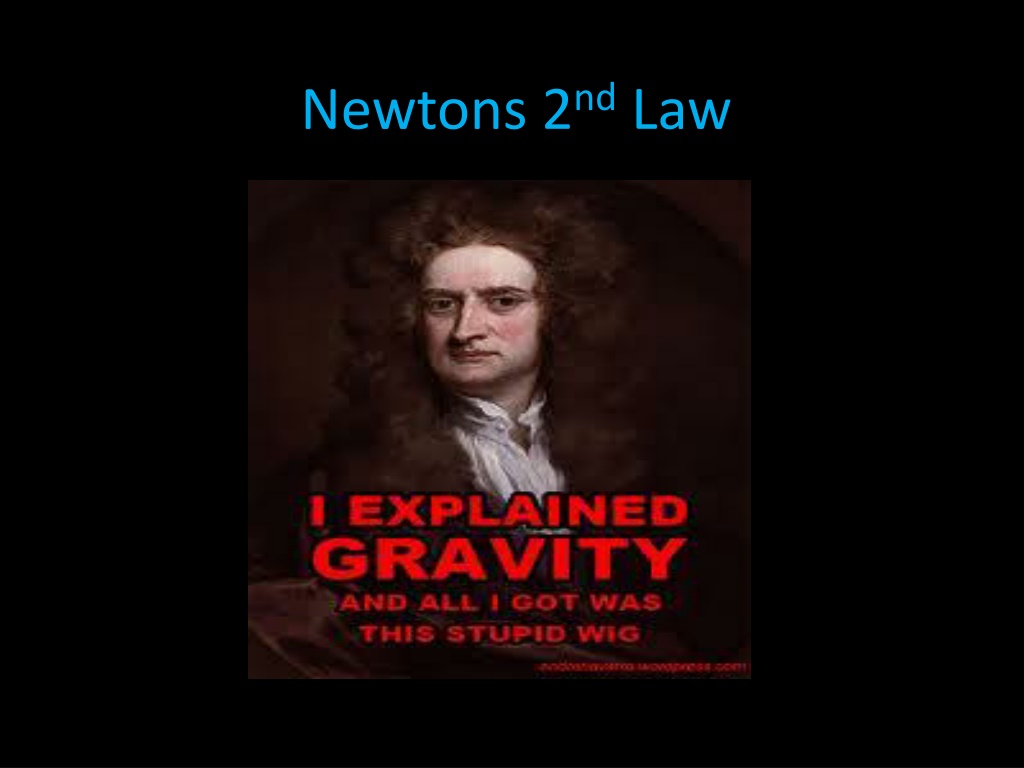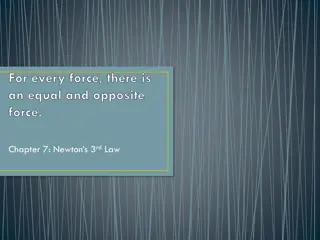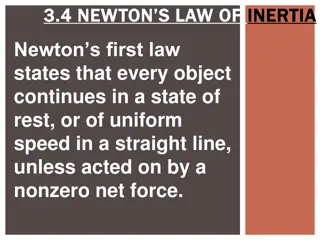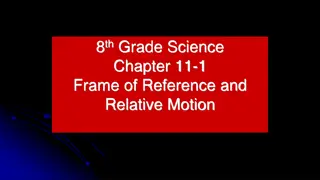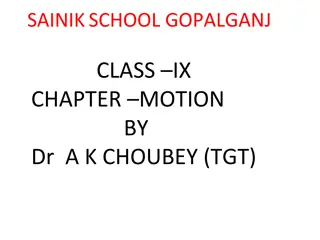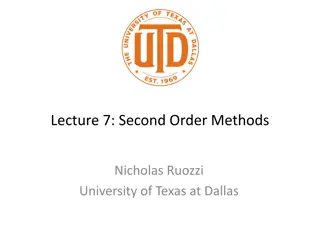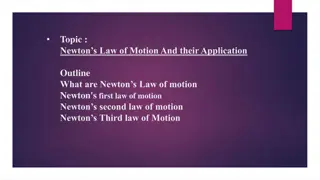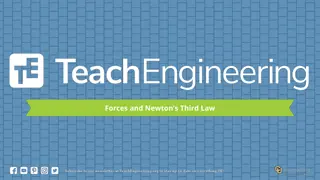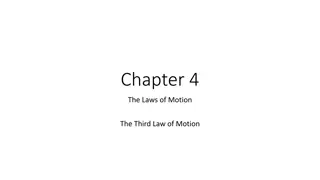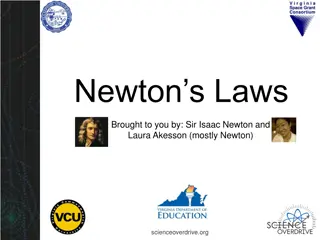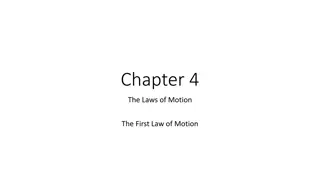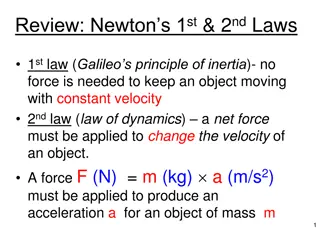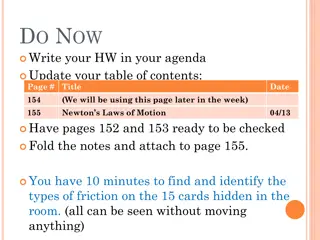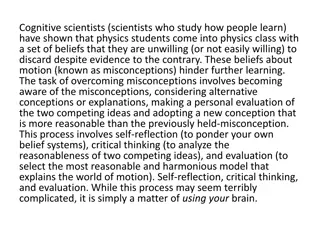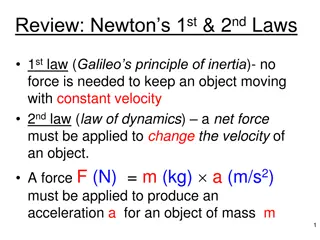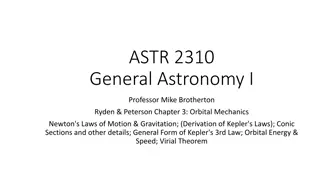Newton's Second Law of Motion
Newton's second law of motion explains how the acceleration of an object is related to the force applied and the object's mass. The law can be summarized in the formula F = M x A, where F is the net force, M is the mass of the object, and A is the acceleration. This law helps us understand the dynamics of objects in motion and how forces affect their movement.
Download Presentation

Please find below an Image/Link to download the presentation.
The content on the website is provided AS IS for your information and personal use only. It may not be sold, licensed, or shared on other websites without obtaining consent from the author.If you encounter any issues during the download, it is possible that the publisher has removed the file from their server.
You are allowed to download the files provided on this website for personal or commercial use, subject to the condition that they are used lawfully. All files are the property of their respective owners.
The content on the website is provided AS IS for your information and personal use only. It may not be sold, licensed, or shared on other websites without obtaining consent from the author.
E N D
Presentation Transcript
Newton's second law of motion can be formally stated as follows: The acceleration of an object as produced by a net force is directly proportional to the magnitude of the net force, in the same direction as the net force, and inversely proportional to the mass of the object.
Instead The second law states that the acceleration of an object is dependent upon two variables: Net Force Mass If net force force acting on an object the acceleration acceleration of the object the acceleration acceleration of the object If the mass massof an object F and A: Direct relationship M and A: Inverse relationship
Newtons 2nd Law Summarized: The acceleration of an object is directly related to the net force applied and inversely related to the mass of the object. F = M x A
Newtons 2ndlaw can be expressed using this formula Force = Mass x Acceleration or F= M x A OR... We can use this: F a F M m = A =
Rank the following in order of the acceleration of the car from greatest to least. Ties are possible! 1. b 2. a = d 3. c M a. A? F M b. 2F A? 2M c. F A? 2M 2F d. A?
Rank the following in order of force required to accelerate the car from greatest to least. Ties are possible: M a. A F? 1. d 2. b=c 3. a 2M F? b. A M F? c. 2 A 2M d. F? 2 A
UNITS!! A = F F = M x A M = F A M These formulas only work if the units are correct: Mass in KILOGRAMS (kg) Force in NEWTONS (N) Acceleration in METERS/SECOND/SECOND (m/s/s or m/s2 )
Lets try a few problems 1. What net force is required to accelerate a car at a rate of 2 m/s2 if the car has a mass of 3,000 kg? F=_______ m=______ a= _____ http://tomscollisionrepair.com/sitebuildercontent/sitebuilderpictures/webassets/lamborghini_cartoon_car_0.jpg 2. What net force is required to accelerate a bowing ball at the same rate of rate of 2 m/s2 if the bowling ball has a mass of 10 kg? F=______ m=______ a=______ http://www.esquire.com/cm/esquire/images/LP/bowling-ball-0408-lg.jpg
3. What is the acceleration of a softball if it has a mass of 0.5 kg and the player throws it with a force of 200 N? F=______ m=______ a=______ http://www.bluefield.edu/mediafiles/softball-ball-2.jpg 4. What is the acceleration of the 10 kg bowling ball thrown by the same player, throwing with a force of 200N? F=______ m=______ a=______ http://www.esquire.com/cm/esquire/images/LP/bowling-ball-0408-lg.jpg
